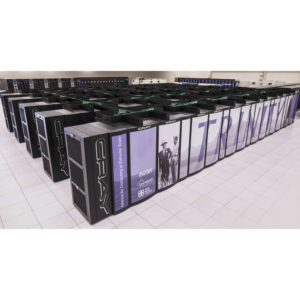 In this video from the HPC User Forum, Terry Wallace, Director Emeritus for Los Alamos National Lab presents: A history of LANL.
In this video from the HPC User Forum, Terry Wallace, Director Emeritus for Los Alamos National Lab presents: A history of LANL.
The Laboratory was established in 1943 as site Y of the Manhattan Project for a single purpose: to design and build an atomic bomb. It took just 27 months. On July 16, 1945, the world’s first atomic bomb was detonated 200 miles south of Los Alamos at Trinity Site on the Alamogordo Bombing Range. Under the project leadership of General Leslie R. Groves and staff direction of J. Robert Oppenheimer, scientists at the Laboratory had successfully weaponized the atom.
The Los Alamos of today has a heightened focus on worker safety and security awareness, with the ever-present core values of intellectual freedom, scientific excellence, and national service. Outstanding science underpins the Laboratory’s past and its future. A rich variety of research programs directly and indirectly support the Laboratory’s basic mission: maintaining the safety, security, and reliability of the nation’s nuclear deterrent without the need to return to underground testing. With a national security focus, the Laboratory also works on nuclear nonproliferation and border security, energy and infrastructure security, and countermeasures to nuclear and biological terrorist threats.”
 In the HPC arena, the Trinity supercomputer at LANL is designed to provide increased computational capability for the NNSA Nuclear Security Enterprise in support of ever-demanding workloads, e.g., increasing geometric and physics fidelities while maintaining expectations for total time to solution. The capabilities of Trinity are required for supporting the NNSA Stockpile Stewardship program’s certification and assessments to ensure that the nation’s nuclear stockpile is safe, reliable, and secure.
In the HPC arena, the Trinity supercomputer at LANL is designed to provide increased computational capability for the NNSA Nuclear Security Enterprise in support of ever-demanding workloads, e.g., increasing geometric and physics fidelities while maintaining expectations for total time to solution. The capabilities of Trinity are required for supporting the NNSA Stockpile Stewardship program’s certification and assessments to ensure that the nation’s nuclear stockpile is safe, reliable, and secure.




